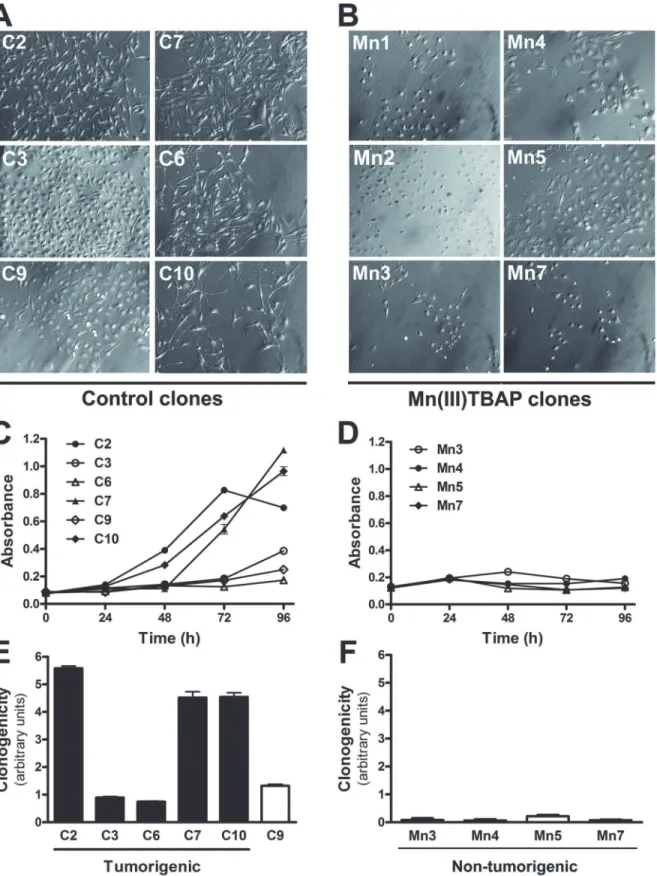CORRECTION
Correction: Ras and Rac1, Frequently
Mutated in Melanomas, Are Activated by
Superoxide Anion, Modulate Dnmt1 Level
and Are Causally Related to Melanocyte
Malignant Transformation
Fernanda Molognoni, Fabiana Henriques Machado de Melo, Camila Tainah da Silva,
Miriam Galvonas Jasiulionis
The image for the Mn2 panel of
Fig 6B
is incorrect. Please see the complete, corrected
Fig 6
here.
PLOS ONE | DOI:10.1371/journal.pone.0124983 April 13, 2015 1 / 3
OPEN ACCESS
Citation:Molognoni F, de Melo FHM, da Silva CT, Jasiulionis MG (2015) Correction: Ras and Rac1, Frequently Mutated in Melanomas, Are Activated by Superoxide Anion, Modulate Dnmt1 Level and Are Causally Related to Melanocyte Malignant Transformation. PLoS ONE 10(4): e0124983. doi:10.1371/journal.pone.0124983
Published:April 13, 2015
Fig 6. Abrogating superoxide anion during sequential cycles of anchorage restriction results in clones with reduced cell proliferation and clonogenicity and increases the time required to malignant conversion.Melan-a melanocytes were submitted to sequential cycles of anchorage impediment in the presence (Mn clones) or not (control clones) of 50μM Mn(III)TBAP. Almost control clones showed spindle morphology (A) whereas Mn clones senescent-like aspect (B). Cell proliferation was analyzed by MTT assay in control (C) and Mn clones (D). The clonogenic capability of control (E) and
Reference
1. Molognoni F, de Melo FHM, da Silva CT, Jasiulionis MG (2013) Ras and Rac1, Frequently Mutated in Melanomas, Are Activated by Superoxide Anion, Modulate Dnmt1 Level and Are Causally Related to Melanocyte Malignant Transformation. PLoS ONE 8(12): e81937. doi:10.1371/journal.pone.0081937 PMID:24358134
Mn clones (F) was evaluated before escape from senescent-like phenotype by plating 200 cells on 60 mm-dishes. After 9 days, the cell number was estimated by measuring the absorbance after lysing the cells stained with Toluidine blue.
doi:10.1371/journal.pone.0124983.g006
